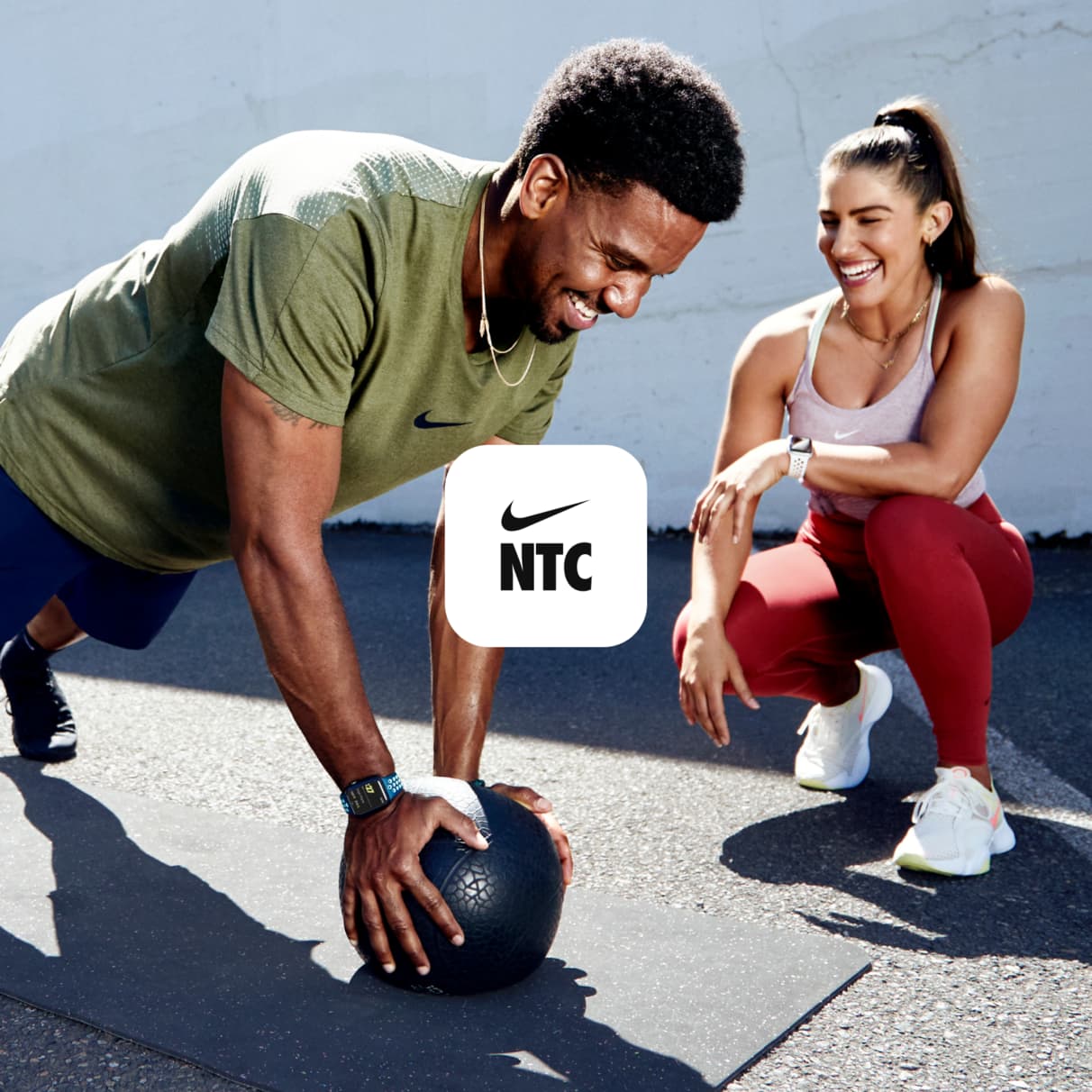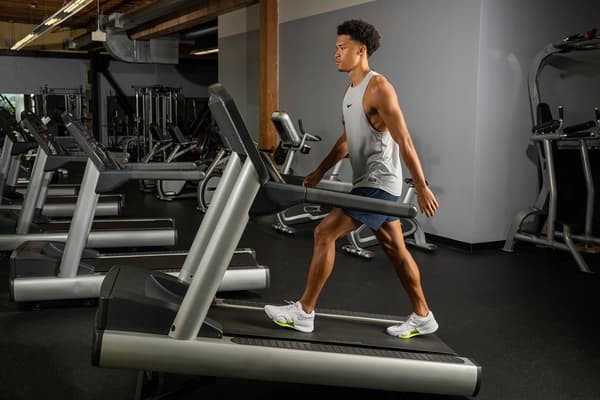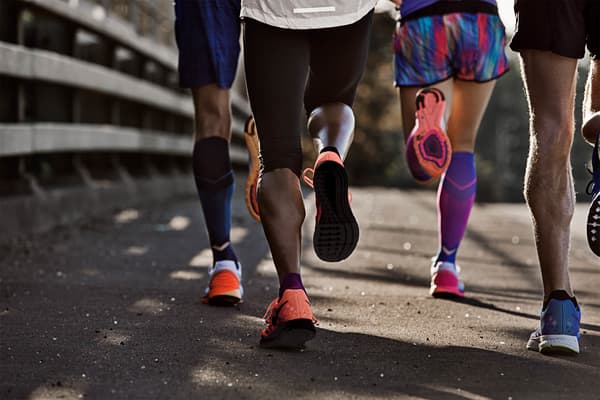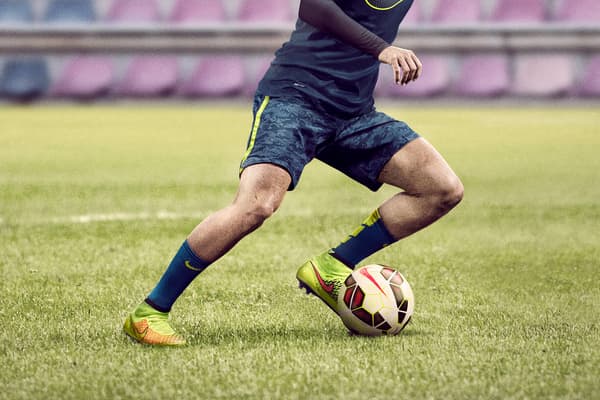Everything You Need To Know About IT Band Syndrome, According to Experts
Sport & Activity
Feeling a pulling sensation or twinge in the side of your leg and hip? You could be dealing with IT band syndrome.

Exercising is one of the best ways to improve your overall well-being. And while working out is a key pillar of holistic health, it's essential to pack in time for recovery, strength training and mobility to avoid common overuse injuries like IT band syndrome.
What is the IT band?
The IT band, short for the iliotibial band, is a connective tissue that connects all the lateral structures from the outer side of your hip down to your knee, said Vinh Pham, DPT and founder of Myodetox.
Contrary to common misnomers, the IT band is not a muscle as it can't expand and contract. Simply put, the connective tissue runs from the hip (or the ilium) to the tibia, which is where the knee is, said Simon M. Brossier, PT, DPT and physiotherapist at NYU Langone Orthopedic Center.
And while the IT band runs down the outside of the upper leg, it also serves as a dense band of fascia that connects to your gluteus medius (one of the three gluteal muscles in between the gluteus maximus and minimus, aka the upper side of your glutes), your vastus lateralis (the largest part of your quadriceps muscle), your tensor fasciae latae also known as the TFL (located in the upper front of the leg near the hip), and your lateral hamstring, Pham said.
RELATED: The Most Common Causes of Hip Pain From Running—And How To Prevent It
The IT band acts like a rubber band. It can stretch and shorten, providing support and stability at the hip and knee, "and essentially it helps us be more efficient at running and walking. So it helps to spread the forces at the hip and at the knee", Brossier said.
What is IT band syndrome and what causes it?
"Essentially it's just irritation of the IT band", Pham said. The IT band connects the structures of the leg, and when things start to pull or move a certain way, typically less efficiently, it becomes irritated.
Any time you're using your lower extremities—from running to cycling to lifting—and you don't have stability in the hips, you're at risk of getting IT band syndrome.
For a long while, experts thought IT band syndrome was caused by repetitive motion rubbing on the bony areas at the outside of the knee, but that's not necessarily what's happening, Brossier said. There's a sensitive fat pad (a spot with fatty tissue) located near the bone on the outside of the knee that helps absorb friction, "and so we actually are starting to think that it's now the compression of this fat pad from the IT band because the IT band is essentially right over it, [and compression and rubbing] over and over again can cause that pain over the outside of the knee", Brossier said.
Another reason you may be experiencing IT band syndrome is due to too much internal rotation of the hip as you run, Pham said.
"It's all about alignment. So when you're hitting [the ground] you can rotate, but if you rotate too much, it's basically pulling too far", he said.
Your femur bone will naturally rotate inwards, but if you don't have enough hip strength, "you start rotating too far, so then all of this structure starts getting pulled too much", he added.
Exercises To Avoid if You Have IT Band Syndrome
As you've probably heard numerous times, the most important thing you can do is listen to your body and check in with a doctor or other licenced medical professional to provide individual recommendations.
Generally though, if you're doing an exercise and experience minimal discomfort that doesn't increase, Brossier said he's OK with you continuing to perform that movement. But if you do a movement and experience discomfort, it's a sign that you should back off and modify the movement.
Specific movements, such as curtsy lunges, that put your hips and legs in a position that's more susceptible to tension on the outside of the leg should be avoided, Brossier said. He also suggested avoiding positions where the leg is more inwards and comes across the body to prevent further irritation of the IT band.
How To Prevent and Treat IT Band Syndrome
One of the easiest ways to prevent IT band syndrome is to implement strength training sessions into your movement routine, especially if you're a runner and looking to improve your performance and prevent injury, both Brossier and Pham said.
"And the big takeaway behind those is that it has to be a single-leg exercise or unilateral. That would be a better bang for your buck", Brossier said.
Since the emphasis is on improving your strength, Brossier said the weight you're using, if you're advanced enough to use weights, should be moderately heavy but something you can do for three to four sets of eight to 12 reps.
"It shouldn't be so easy that in your head you're like, 'I can probably do 20 more [reps] and it wouldn't be a problem,'" Brossier said. He advised starting with one to two strength sessions a week, eventually working your way up to three sessions, and emphasised the importance of taking recovery days during your weekly training.
RELATED: Should You Try an Ice Bath for Post-Workout Recovery?
Getting more specific, Pham recommended focusing on improving the stability of the hips and strengthening the gluteus medius. Supportive IT band syndrome exercises include a single-leg deadlift (with or without weight), which can be progressed to a single-leg deadlift with a knee drive, a side plank with hip abduction, and the stork exercise (balancing on one leg while the other leg presses against a ball placed on a wall) will help you tremendously, Pham said.
Another way to prevent IT band syndrome if you're a runner is to focus on improving your cadence to potentially reduce the stress on your knee, Brossier said. Focusing on your cadence can help prevent IT band syndrome because the more steps you can take in a minute, the less load and impact you'll have with each step, "and therefore reducing that load on every single step can be pretty impactful if someone has a sensitive knee", he said.
A quick note on foam rolling and massage guns to treat IT band syndrome. Because the IT band is so strong, these methods probably won't help. It may have a placebo effect and temporarily reduce any symptoms you may be experiencing, but ultimately, these tools are just a temporary fix, so it's important to focus on proper running mechanics and make sure that you're taking the time to focus on prehabilitation, such as doing mobility work, myofascial work and getting treatment like deep tissue massages.
When it comes to preventing and treating IT band syndrome, it's also important to look at the body holistically, specifically how the entire leg is functioning. Pham recommended working with an expert who will approach your symptoms as a chain reaction, looking at the strength and stability of the foot, knee and hips to prevent and improve any symptoms.
Rest is also important, but that doesn't mean you have to stop training. As you take it easy, this is the optimal time to begin to learn the proper mechanics of the lower extremities and begin to focus on and practise moving efficiently, Pham said.
Bottom line: you don't have to completely cut out movement. In fact, it's advised that you don't as it can also cause your IT band to flare up, but you should listen to your body. And if your IT band syndrome doesn't improve as you implement these tips, consult a rehab expert who has a background in sports and specialises in working with athletes to get guidance on how to tweak your training routine to get back on track.
Words by Tamara Pridgett





